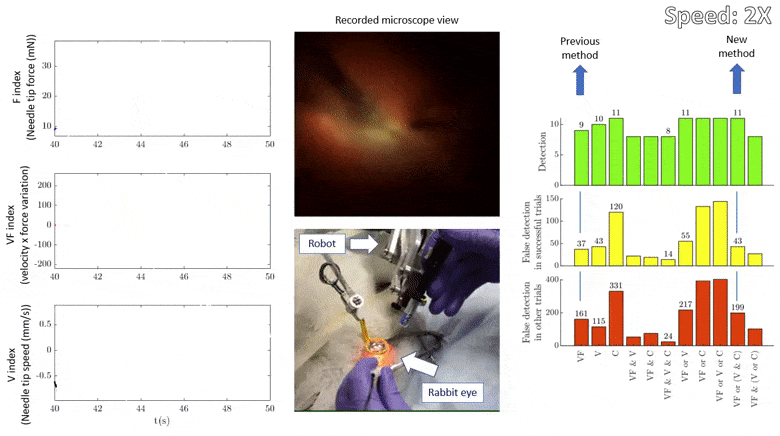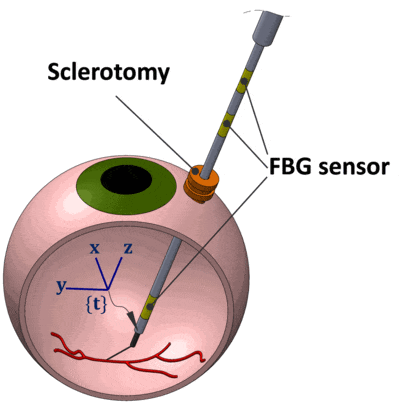
In this project, we performed the first in-vivo retinal vein cannulation trial in rabbit eyes, using sensorized metal needles and a cooperatively controlled steady-hand eye robot (SHER). After analyzing the data, we observed that previously developed puncture detection algorithms are not as reliable in-vivo as they were in phantom studies. So, by closely looking for the common trends at the moment of venous puncture, we defined two new indices, in addition to two previously demonstrated ones, based on the velocity and force of the needle tip and the correlation between the needle-tissue and tool-sclera interaction forces. The new indices, when used in conjunction with the previous algorithm, improved the detection rate from 75% to 92%, but slightly increased the number of false detections from 37 to 43. We also studied the effect of detection timespan on the performance of detecting actual punctures and showed that increasing the detection window improves detection performance, but at the cost of adding to the delay.
The novel criteria introduced and evaluated in this work may significantly enhance a surgeon’s ability to determine the moment of venous puncture during retinal microsurgery. These criteria are intended to supplement the surgeons’ visual feedback as provided by the operating microscope, as well as their own surgical judgment. We believe that the analytical workflow presented in this work can be used as a baseline in future studies and can result in an even more reliable puncture detection algorithm when more data are available. The resulting algorithms should be subsequently verified in other animals, such as pigs with their more human like eye anatomy. Clinical trials would follow.

